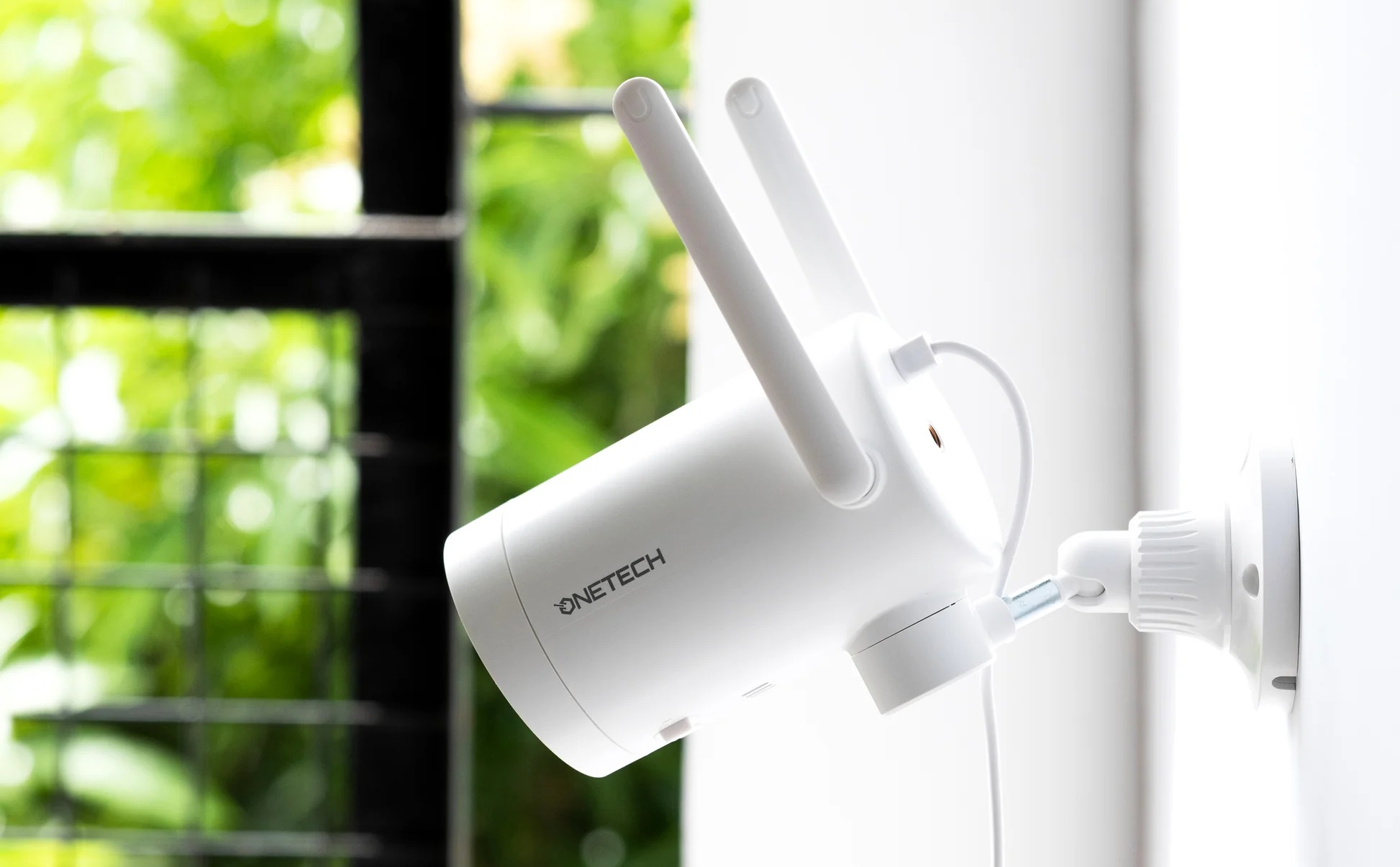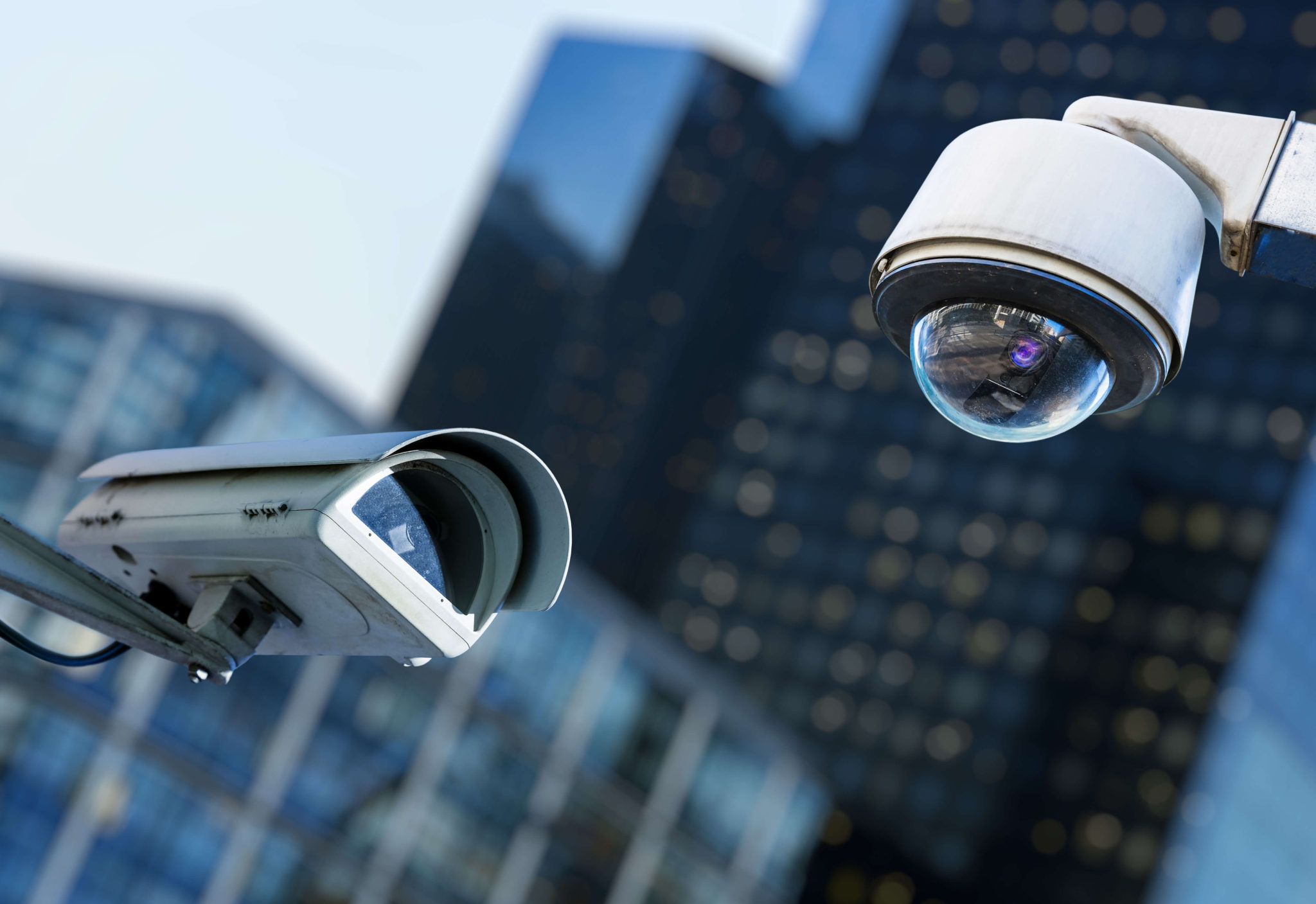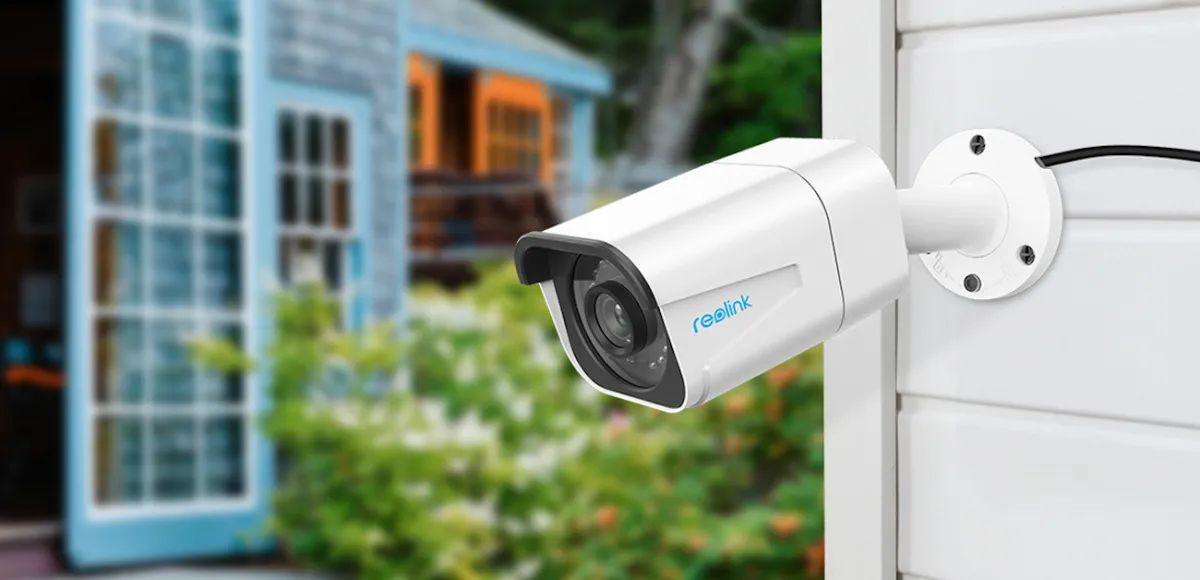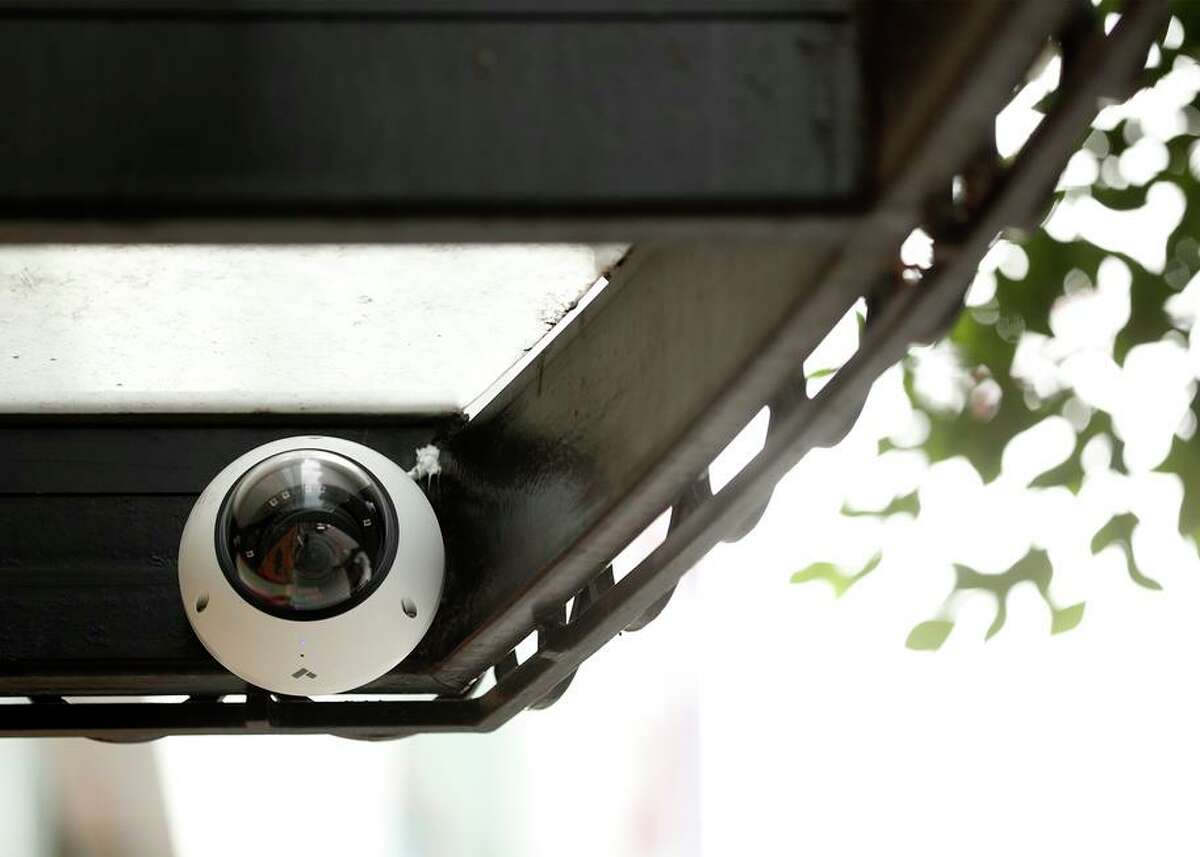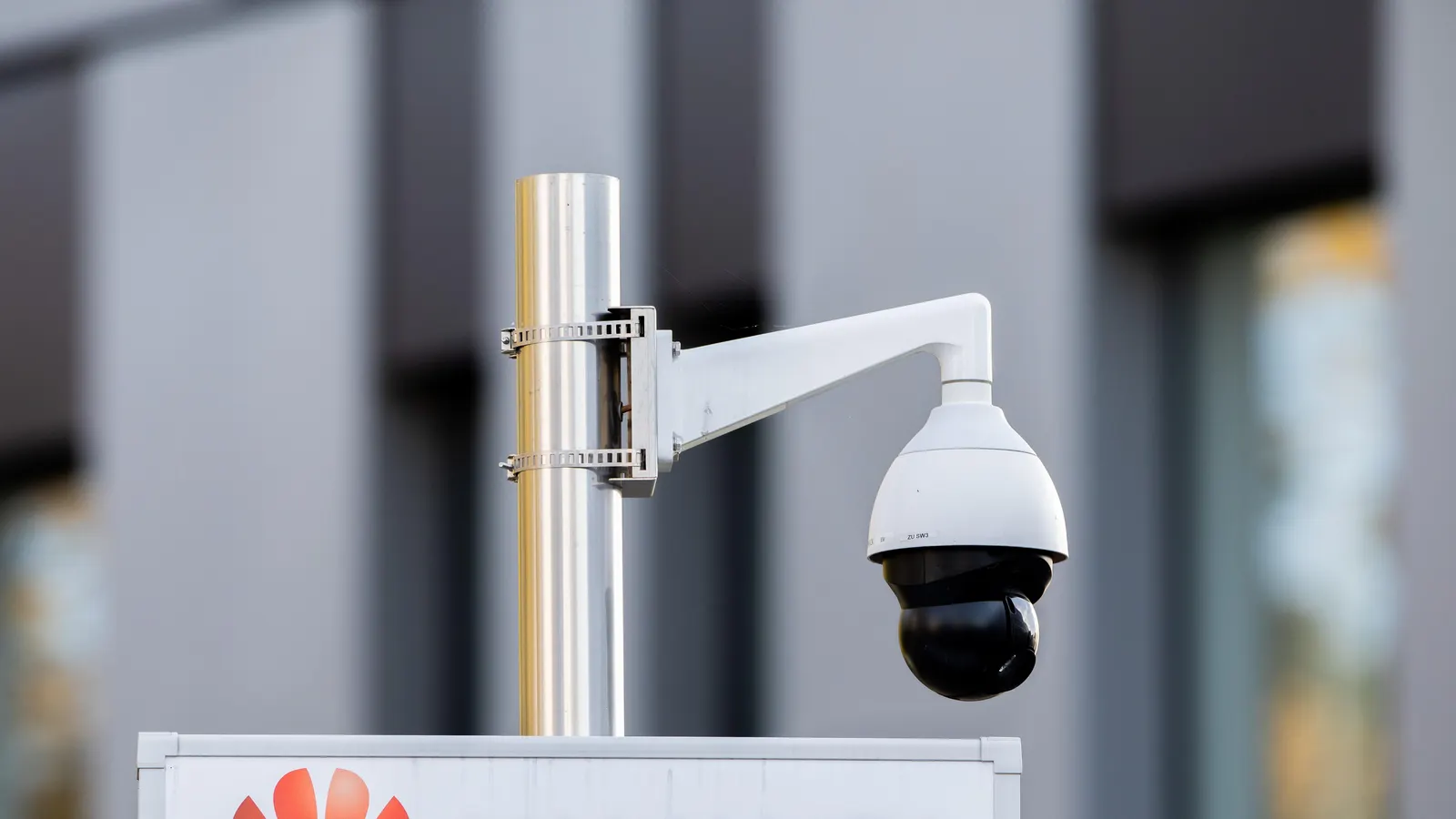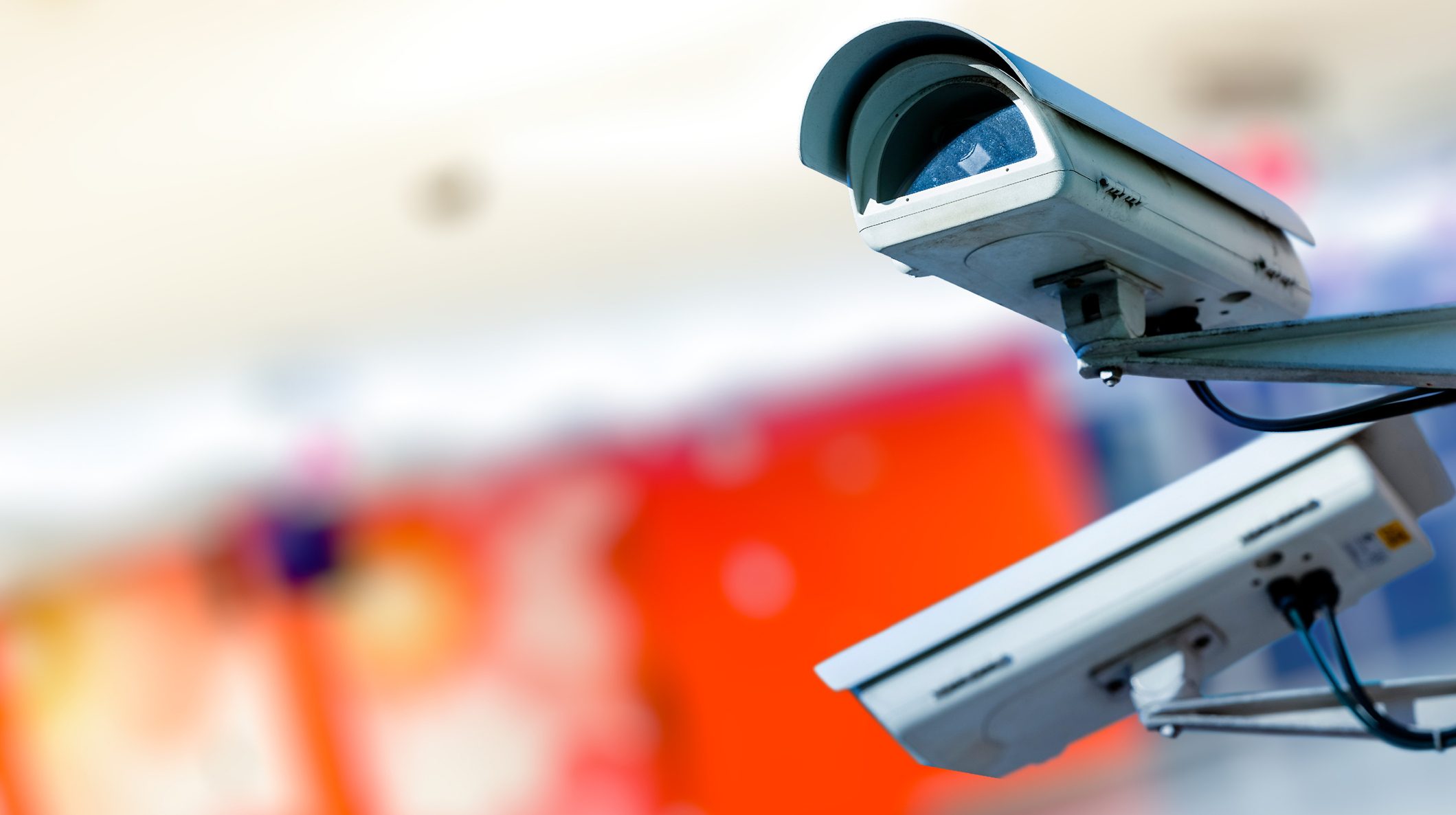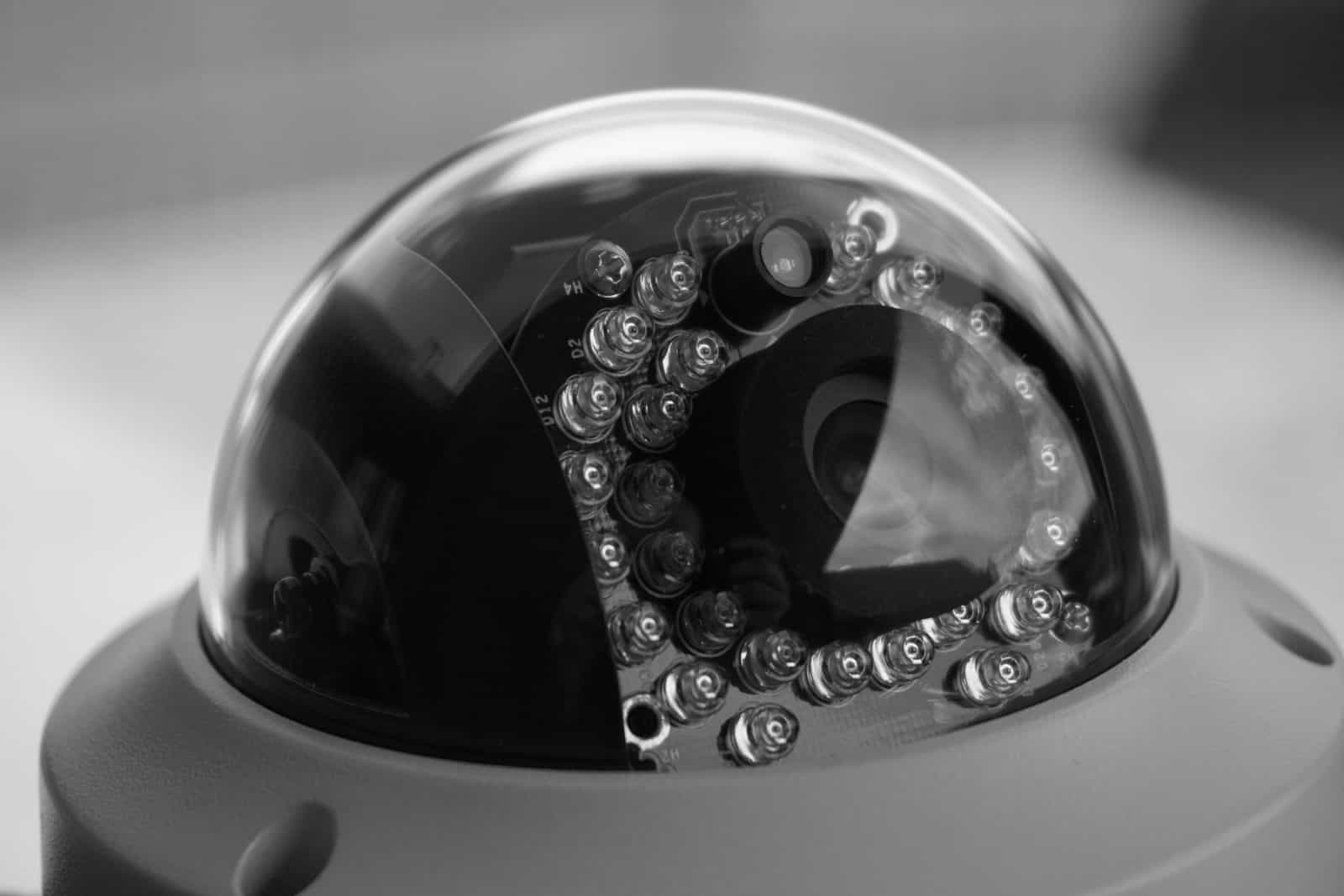Home>Home Security and Surveillance>How To Choose A Security Camera System For Your Home
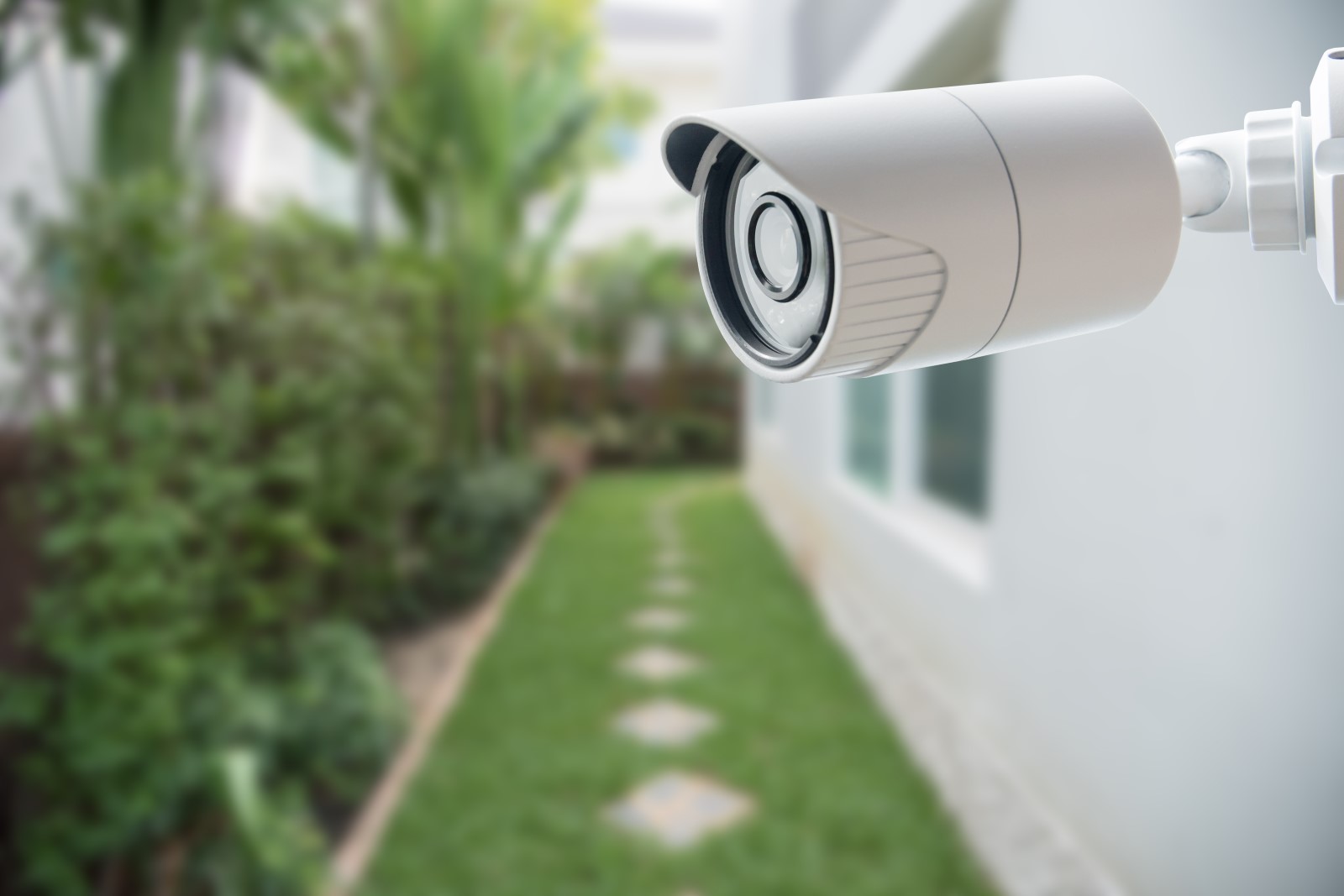

Home Security and Surveillance
How To Choose A Security Camera System For Your Home
Modified: March 6, 2024
Looking for a security camera system for your home? Discover the best options for home security and surveillance with our expert guide.
(Many of the links in this article redirect to a specific reviewed product. Your purchase of these products through affiliate links helps to generate commission for Storables.com, at no extra cost. Learn more)
Introduction
Ensuring the security and safety of your home and loved ones should be a top priority. With the advancements in technology, home security camera systems have become an integral part of residential security. These systems offer peace of mind by allowing you to monitor your property remotely, deter potential intruders, and provide evidence in case of any untoward incidents.
Choosing the right security camera system for your home can be a daunting task. With a wide range of options available in the market, it’s essential to consider various factors to make an informed decision. In this article, we will guide you through the process of selecting an ideal security camera system for your specific needs and requirements.
Key Takeaways:
- Choose a security camera system based on your budget, location, and desired features. Consider factors like resolution, night vision, and storage options to ensure effective surveillance for your home.
- Prioritize proper installation and regular maintenance to maximize the performance and lifespan of your security camera system. Remote viewing and mobile access provide convenient monitoring from anywhere, enhancing your home security.
Read more: How To Choose Security Cameras
Factors to Consider
Before purchasing a security camera system, you need to evaluate certain factors to ensure it aligns with your home security goals. Consider the following:
- Budget: Determine your budget as it will determine the features and capabilities of the system you can afford.
- Location: Assess the areas of your home that require surveillance. This can include entry points, driveways, patio, backyard, or any other vulnerable areas.
- Size of Coverage: Determine the area you want to cover with the security cameras. This will help you decide the number of cameras needed and the field of view required.
- Installation: Consider whether you want a DIY installation or professional installation. DIY systems are usually easier to install but may require technical knowledge. Professional installations ensure proper placement and setup.
- Integration: If you have an existing home automation system, it’s important to choose a security camera system that can integrate seamlessly with your existing setup.
- Weatherproofing: If you plan to install cameras outdoors, ensure they are weatherproof and can withstand elements like rain, snow, and extreme temperatures.
- Scalability: Think about future expansion. If you anticipate adding more cameras in the future, choose a system that allows for easy scalability.
Types of Security Cameras
There are various types of security cameras available, each with its own features and benefits. Consider the following options:
- Indoor Cameras: Ideal for monitoring indoor spaces, such as living rooms, bedrooms, and hallways. They are compact and discreet in design.
- Outdoor Cameras: Designed to withstand outdoor environments, these cameras are weatherproof and have built-in protection against vandalism.
- PTZ Cameras: PTZ (pan-tilt-zoom) cameras allow for remote control of camera movement. They can rotate horizontally and vertically, zoom in and out, providing flexibility in tracking and monitoring.
- Dome Cameras: Dome cameras are mounted on the ceiling and offer 360-degree coverage. They are tamper-proof and provide a deterrent for potential intruders.
- Wireless Cameras: Wireless cameras eliminate the need for running cables, offering flexibility in installation. They rely on Wi-Fi or other wireless protocols for transmitting data.
Key Takeaways:
- Choose a security camera system based on your budget, location, and desired features. Consider factors like resolution, night vision, and storage options to ensure effective surveillance for your home.
- Prioritize proper installation and regular maintenance to maximize the performance and lifespan of your security camera system. Remote viewing and mobile access provide convenient monitoring from anywhere, enhancing your home security.
Read more: How To Choose Security Cameras
Factors to Consider
Before purchasing a security camera system, you need to evaluate certain factors to ensure it aligns with your home security goals. Consider the following:
- Budget: Determine your budget as it will determine the features and capabilities of the system you can afford. It’s important to find a balance between your budget and the level of security you desire. Keep in mind that investing in a reliable and high-quality security camera system is a worthwhile long-term investment.
- Location: Assess the areas of your home that require surveillance. This can include entry points, driveways, patio, backyard, or any other vulnerable areas. Identifying these areas will help you determine the number of cameras you need and their optimal placement for maximum coverage.
- Size of Coverage: Determine the area you want to cover with the security cameras. This will help you decide the number of cameras needed and the field of view required. Consider any blind spots or areas that may require additional coverage. Assess the layout of your property and prioritize the areas that need the highest level of surveillance.
- Installation: Consider whether you want a DIY installation or professional installation. DIY systems are usually easier to install but may require technical knowledge. Professional installations ensure proper placement and setup of the cameras. If you choose a DIY installation, make sure you have the necessary tools and follow the manufacturer’s instructions carefully.
- Integration: If you have an existing home automation system, it’s important to choose a security camera system that can integrate seamlessly with your existing setup. This will allow you to control and monitor your security cameras along with other smart devices in your home using a single interface. Check the compatibility of the security camera system with popular home automation platforms.
- Weatherproofing: If you plan to install cameras outdoors, ensure they are weatherproof and can withstand elements like rain, snow, and extreme temperatures. Look for cameras with an IP rating of 65 or higher, indicating their ability to handle outdoor conditions. Also, consider the temperature range in your area and make sure the cameras can function in those conditions without any issues.
- Scalability: Think about future expansion. If you anticipate adding more cameras in the future, choose a system that allows for easy scalability. Look for systems that offer the option to add additional cameras and have the capacity to support multiple cameras without compromising performance.
Taking these factors into account will help you narrow down your options and select a security camera system that meets your specific needs and requirements. Remember to research different brands, read customer reviews, and compare features and prices to make an informed decision. Investing in a quality security camera system will provide you with the peace of mind and confidence in knowing that your home is well protected.
Types of Security Cameras
There are various types of security cameras available, each with its own features and benefits. Consider the following options:
- Indoor Cameras: Ideal for monitoring indoor spaces, such as living rooms, bedrooms, and hallways. They are compact and discreet in design, making them blend seamlessly with the interior decor. These cameras often come with features like two-way audio, motion detection, and high-definition video recording.
- Outdoor Cameras: Designed to withstand outdoor environments, these cameras are weatherproof and have built-in protection against vandalism. They are typically equipped with infrared night vision to provide clear surveillance even in low-light or complete darkness. Look for outdoor cameras with a wide viewing angle to cover larger areas.
- PTZ Cameras: PTZ (pan-tilt-zoom) cameras allow for remote control of camera movement. They can rotate horizontally and vertically, zoom in and out, providing flexibility in tracking and monitoring. PTZ cameras are commonly used in large-scale surveillance systems, as they can cover a wide area and zoom in on specific objects or individuals for detailed monitoring.
- Dome Cameras: Dome cameras are mounted on the ceiling and offer 360-degree coverage. They are tamper-proof and provide a deterrent for potential intruders. The dome design makes it difficult for anyone to determine the direction the camera is pointing, enhancing their effectiveness. Dome cameras are available in both indoor and outdoor variants.
- Wireless Cameras: Wireless cameras eliminate the need for running cables, offering flexibility in installation. They rely on Wi-Fi or other wireless protocols for transmitting data. Wireless cameras are easy to install and can be moved easily if needed. However, they may be susceptible to signal interference or limitations in range, so ensure a strong and secure wireless network for optimal performance.
Depending on your specific needs and the areas you want to monitor, you can choose the appropriate type of security camera or a combination of different types to create a comprehensive surveillance system. Consider factors such as the coverage area, environment, and desired features to make the right choice.
It’s also worth noting that many security camera systems offer the option for both wired and wireless connectivity. This allows you to have a hybrid system, where some cameras are wired for stable connectivity, while others are wireless for easy installation and flexibility. This can be a suitable option if you have a large property or specific areas where running wires is challenging.
By understanding the different types of security cameras available, you can make an informed decision that best fits your home security requirements. Remember to consider factors such as location, environment, and desired features to select the most suitable cameras for your specific needs.
Read more: How To Choose A Home Security Camera System
Wired vs Wireless Security Camera Systems
When considering a security camera system for your home, one of the important decisions you’ll need to make is whether to go with a wired or wireless system. Both options have their own advantages and considerations. Let’s take a closer look at each:
Wired Security Camera Systems
Wired security camera systems require physical cables to connect the cameras to a central recording device or network. Here are some key points to consider:
- Reliable Connection: Wired systems provide a stable and interference-free connection. Since the cameras are directly connected to the recording device or network, there is no reliance on wireless signals. This ensures a reliable and consistent video feed.
- Higher Image Quality: Wired systems generally offer higher resolution and image quality compared to wireless systems. This is beneficial if you require clear and detailed surveillance footage.
- No Signal Interference: Wired systems are not susceptible to interference from other electronic devices or Wi-Fi signals. This can be advantageous in areas with a high volume of wireless networks or crowded frequencies.
- Power Supply: Wired cameras require a power source, typically through an electrical outlet or Power over Ethernet (PoE). Running power cables along with the video cables may require careful planning and installation, especially for outdoor cameras.
- Installation Complexity: Installing a wired system can be more complex, especially if running cables through walls or ceilings is involved. This may require professional installation or specialized DIY knowledge.
Wireless Security Camera Systems
Wireless security camera systems operate without the need for physical cables, transmitting data wirelessly to a receiver or network. Consider the following when evaluating wireless systems:
- Easy Installation: Wireless systems are generally easier to install since there is no need to run cables. This allows for greater flexibility in camera placement and reduces the installation time and effort.
- Remote Access: Wireless systems allow for remote viewing and access to live footage from anywhere using smartphone apps or web browsers. This provides convenience and peace of mind, as you can monitor your home even when you’re away.
- Expandability: Wireless systems can be easily expanded by adding additional cameras without the need for additional cables. This makes them suitable for both smaller and larger properties that may require more coverage over time.
- Signal Strength and Interference: Wireless systems rely on a stable Wi-Fi or wireless signal. Although modern wireless technologies offer strong and reliable connections, signal interference from other devices or environmental factors may impact performance. It’s important to ensure a strong and secure wireless network for optimal performance.
- Power and Battery Considerations: Wireless cameras are powered by batteries or rechargeable batteries, which need to be regularly monitored and replaced or recharged. This can add an additional maintenance aspect to consider.
Your choice between wired and wireless security camera systems will depend on your specific requirements, property layout, and personal preferences. Consider factors such as reliability, image quality, ease of installation, and long-term maintenance when making your decision.
Resolution and Image Quality
When choosing a security camera system for your home, one of the key factors to consider is the resolution and image quality. The resolution determines the level of detail and clarity in the recorded footage, making it crucial for accurate identification and evidence. Here’s what you need to know about resolution and image quality:
Read more: How To Make Your Own Security Camera
Resolution
Resolution refers to the number of pixels or dots per inch (DPI) that a camera can capture. Higher resolution means more pixels and, consequently, more detail in the image. The most common resolutions for security cameras are:
- Standard Definition (SD): SD resolution typically ranges from 480p to 720p, providing a basic level of image quality. While these cameras can capture usable footage, the details may not be as clear as higher-resolution options.
- High Definition (HD): HD cameras offer resolutions of 1080p (Full HD) or higher. These cameras provide crisp and detailed images, allowing for better identification of people, objects, and license plates.
- Ultra High Definition (UHD): UHD cameras, also known as 4K cameras, offer resolutions of 2160p and beyond. These cameras provide incredibly sharp and detailed footage, enabling precise identification and enhanced visual clarity.
When selecting the resolution, consider the areas you want to monitor and the level of detail required. For larger areas or situations where accurate identification is crucial, opting for higher resolution cameras is recommended.
Image Quality
Apart from resolution, other factors contribute to overall image quality. These include:
- Image Sensor: The image sensor is responsible for capturing light and converting it into an electronic signal. Larger image sensors generally produce better image quality, especially in low-light conditions.
- Wide Dynamic Range (WDR): WDR technology balances the contrast between bright and dark areas in a scene. This ensures that details are visible even in challenging lighting conditions, such as when a camera is pointed towards a bright window.
- Low Light Performance: Consider cameras with good low light performance, especially if you require surveillance during nighttime or in dimly lit areas. Look for cameras with features like infrared (IR) night vision or low-light enhancement technologies.
- Image Compression: Compression algorithms determine how the video footage is compressed and stored. While compression is necessary to save storage space, excessive compression can degrade image quality. Look for cameras that use efficient compression methods without sacrificing image clarity.
By choosing a security camera system with the appropriate resolution and image quality, you can ensure that you capture clear and detailed footage. This makes it easier to identify individuals, objects, and events, providing valuable evidence if any security issues arise.
Remember to strike a balance between resolution, budget, and storage requirements. Higher resolution cameras may require more storage space and a faster internet connection for remote viewing. Assess your needs and make an informed decision that best suits your home security requirements.
Night Vision
When it comes to selecting a security camera system for your home, night vision capabilities play a crucial role in ensuring round-the-clock surveillance. Night vision technology allows cameras to capture clear and detailed footage, even in low-light or complete darkness. Here’s what you need to know about night vision:
Types of Night Vision
There are primarily two types of night vision technologies used in security cameras:
- Infrared (IR) Night Vision: Infrared night vision is the most common and widely used technology in security cameras. It works by emitting infrared light, which is invisible to the human eye but can be detected by the camera’s image sensor. This allows the camera to capture and display images in black and white, even in complete darkness. The range of infrared illumination varies between camera models, so it’s important to consider the maximum distance you want to monitor in low-light conditions.
- Color Night Vision: Color night vision is a more advanced technology that allows cameras to capture color footage even in low-light environments. This is achieved through the use of specialized image sensors and enhanced low-light performance. Color night vision can provide more details and make it easier to identify individuals or objects. However, it’s important to note that color night vision may have limitations in extremely low-light situations.
Considerations for Night Vision
When evaluating security cameras with night vision capabilities, consider the following factors:
- Range: Determine the maximum distance you want the camera to monitor in low-light conditions. Look for cameras that offer an appropriate range of infrared illumination based on your specific needs.
- Infrared LEDs: The number and quality of infrared LEDs in a camera affect its night vision performance. Cameras with more and higher-quality LEDs generally provide better image quality and longer illumination range.
- Smart IR Technology: Some cameras feature smart IR technology, which adjusts the intensity of infrared illumination based on the distance of objects in the camera’s field of view. This helps prevent overexposure or underexposure in close-up or distant subjects.
- Low Light Performance: Consider cameras with good low light performance even without night vision enabled. These cameras utilize larger image sensors and advanced image processing techniques to capture clearer and more detailed footage in challenging lighting conditions.
- Color Night Vision: If color footage is important to you, explore cameras that offer color night vision capabilities. Keep in mind that color night vision may not be as effective in extremely low-light environments.
Night vision capabilities are essential to ensure continuous monitoring and detection of activities during nighttime or in dark environments. Depending on your specific requirements, choose a security camera system with optimal night vision features to provide reliable surveillance both day and night.
Remember to consider factors like range, infrared LED quality, smart IR technology, and low-light performance to ensure the night vision capabilities of your chosen security camera system meet your expectations.
Field of View
The field of view (FOV) is an important consideration when choosing a security camera system for your home. It refers to the area that a camera can capture and monitor. Understanding the FOV of a camera helps determine the coverage it provides and ensures that all crucial areas are within the camera’s sight. Here’s what you need to know:
Determining the Field of View
The field of view is typically expressed in degrees and can vary depending on the camera’s lens. The FOV is influenced by two main factors:
- Focal Length: The focal length of a lens determines the magnification and perspective of the camera. A shorter focal length results in a wider FOV, while a longer focal length narrows the FOV and provides more zoomed-in views. Consider the specific areas you want to monitor and choose a lens with an appropriate focal length to cover those areas effectively.
- Lens Type: Different lenses, such as fixed lenses or varifocal lenses, offer distinct FOV options. Fixed lenses have a fixed focal length and provide a specific FOV, while varifocal lenses offer adjustable focal lengths and allow you to customize the FOV based on your needs.
To estimate the coverage of a camera’s FOV, you can use online calculators or consult with the manufacturer or vendor. These tools consider the camera’s sensor size, lens focal length, and distance from the target area to provide an approximate coverage area. It’s important to keep in mind the specific requirements of your property and adjust the FOV accordingly.
Selecting the Right FOV
Choosing the right FOV depends on the areas you want to monitor and the level of detail required. Consider the following when selecting the FOV:
- Wide-Angle FOV: If you need a broader view to cover a larger area, opt for a wide-angle FOV. This is suitable for monitoring open spaces, such as driveways, yards, or large rooms.
- Narrow FOV: For more targeted surveillance or to focus on specific entry points, opt for a narrower FOV. This provides a more detailed view and allows for better identification and monitoring of specific areas.
- Combination of FOVs: In some cases, you may need to use a combination of cameras with different FOVs to ensure comprehensive coverage. This approach allows you to tailor the surveillance to different areas of your property.
Consider the layout of your property, the areas that require monitoring, and the level of detail you need to make an informed decision about the FOV. It’s essential to strike a balance between coverage and detail to ensure effective surveillance.
By understanding the field of view and its impact on camera coverage, you can select a security camera system that meets your monitoring requirements. Remember to assess the specific areas you want to cover, consider focal length and lens options, and choose a FOV that provides the desired surveillance coverage for your home.
Motion Detection
Motion detection is a crucial feature in a security camera system as it helps to minimize false alarms and save storage space. With motion detection, the camera can detect and capture footage only when there is movement in the monitored area. Here’s what you need to know about motion detection:
How Motion Detection Works
Motion detection uses advanced algorithms and sensors to detect changes in the camera’s field of view. When motion is detected, the camera triggers an event, such as starting recording, sending alerts, or activating other security measures. The sensitivity of motion detection can usually be adjusted to avoid false alerts caused by non-threatening activities like swaying trees, passing cars, or pets.
Benefits of Motion Detection
Motion detection offers several benefits for both security and practicality:
- Enhanced Security: By detecting and capturing motion, security cameras can alert you to potential intrusions or suspicious activity. This allows for real-time monitoring and enables you to take immediate action if needed.
- Reduced False Alarms: Motion detection minimizes false alarms caused by non-threatening movements or environmental factors. By focusing on significant motion events, you can reduce unnecessary notifications and avoid wasting time and resources.
- Optimized Storage Space: Continuous recording can quickly consume storage space. Motion detection allows cameras to record footage only when there is activity, saving storage capacity and making it easier to review relevant events.
- Convenience: Motion detection can be integrated with other smart home devices or security systems. For example, cameras can trigger lights to turn on when motion is detected, or send notifications to your smartphone or security monitoring service.
Adjusting Motion Detection Settings
To optimize motion detection, consider the following:
- Sensitivity Levels: Adjust the sensitivity of the motion detection to suit your needs. Higher sensitivity may capture more events but may also result in increased false alerts. Lower sensitivity can miss certain motions. Experiment with different settings to find the appropriate level for your specific environment.
- Customizable Detection Zones: Some security cameras allow you to define specific areas within the camera’s field of view where motion detection should be enabled or disabled. This enables you to focus on specific areas of interest and avoid unnecessary alerts from activities outside those zones.
- Notification Preferences: Configure the camera to send notifications or alerts when motion is detected. You can choose to receive email notifications, push notifications on your smartphone, or integrate it with a security monitoring service.
With motion detection, your security camera system becomes more efficient, allowing you to capture only the events that matter. By adjusting sensitivity levels and defining specific detection zones, you can fine-tune motion detection settings to suit your preferences and environment.
When selecting a security camera system, ensure it offers reliable and customizable motion detection capabilities to enhance your home security setup. A well-implemented motion detection feature can provide peace of mind and help you stay connected to your home’s security at all times.
Storage Options
Choosing the right storage option is essential when selecting a security camera system for your home. The storage capacity and method determine how long video footage can be stored and accessed. Here are the main storage options to consider:
Local Storage
Local storage refers to storing video footage directly on the camera or a connected device within your home. There are several options for local storage:
- SD Card: Many cameras have an integrated SD card slot that allows you to insert a memory card for storing footage. The storage capacity of the card will determine the duration of recording before overwriting older footage. Ensure the camera supports a high-capacity and reliable SD card for optimal performance.
- NVR (Network Video Recorder): NVRs are devices specifically designed for recording and storing video footage from security cameras. NVRs offer higher storage capacity and can support multiple cameras simultaneously. They often come with various storage configuration options, such as internal hard drives or external storage devices.
- DVR (Digital Video Recorder): DVRs are similar to NVRs but are typically used for analog cameras. They provide options for local storage, allowing you to connect analog cameras to a central DVR unit for video recording. DVRs are suitable if you have an existing analog camera setup.
Cloud Storage
Cloud storage offers convenient and secure storage for your video footage. With cloud storage, the video recordings are uploaded to a remote server via the internet. Here are some key considerations for cloud storage:
- Subscription Plans: Cloud storage typically requires a subscription plan, where you pay a recurring fee based on storage capacity and features. Consider the storage capacity provided by the plan and whether it aligns with your needs. Some cameras offer a limited amount of free cloud storage, while others offer different pricing tiers for additional storage.
- Accessibility: Cloud storage allows you to access your video footage from anywhere with an internet connection. You can view recordings, manage settings, and receive alerts through smartphone apps or web browsers. This provides convenient remote access to your footage, even if the camera or local storage device is damaged or stolen.
- Reliability and Security: Choose a cloud storage provider with a reputation for reliability, data security, and privacy protection. Look for encryption protocols and robust security measures to ensure your footage is stored safely.
- Bandwidth Considerations: Uploading video footage to the cloud requires a stable and high-speed internet connection. Consider your internet bandwidth capacity, especially if you have multiple cameras or other devices utilizing the same network.
Hybrid Storage
Some security camera systems offer hybrid storage options, allowing for a combination of local and cloud storage. This gives you the flexibility to choose where your video footage is stored based on your preferences and requirements. Hybrid storage options can provide redundancy and backup, ensuring your footage is safe even if one storage option fails.
Consider your storage needs, budget, and personal preferences when choosing between local storage, cloud storage, or a hybrid approach. Evaluate the storage capacity, accessibility, reliability, and security features to make an informed decision.
Remember, it’s important to regularly back up your stored footage to avoid loss in the event of hardware failure or system compromise. Additionally, consider the scalability of your storage solution to accommodate any future requirements as your surveillance needs may evolve over time.
Read more: What To Do If Your Security Camera Is Hacked
Remote Viewing and Mobile Access
Remote viewing and mobile access are essential features of modern security camera systems. They allow you to monitor your home and view live or recorded footage from anywhere using your smartphone, tablet, or computer. Here’s what you need to know about remote viewing and mobile access:
Remote Viewing
Remote viewing refers to the ability to access your security camera system and view live or recorded footage from a remote location. This feature offers convenience, flexibility, and peace of mind, as you can keep an eye on your home even when you’re not physically present.
To set up remote viewing, you typically need to follow these steps:
- Network Configuration: Ensure your security camera system is connected to the internet. This can be done through a wired or wireless connection, depending on the camera’s capabilities and your network setup.
- Software or App Installation: Install the necessary software or mobile app provided by the camera manufacturer. This will allow you to access and control the cameras remotely. Most security camera systems offer apps for iOS and Android devices.
- Account Setup: Create an account or log in to an existing account associated with your security camera system. This account will provide you with secure access to your cameras and their associated features.
- Port Forwarding or Cloud Service: Depending on your camera’s configuration, you may need to set up port forwarding on your router to allow external access. Alternatively, some camera systems utilize cloud services for remote access, eliminating the need for port forwarding.
Once you’ve completed these steps, you’ll be able to remotely connect to your security cameras and view live or recorded footage using your smartphone, tablet, or computer. This offers peace of mind, as you can monitor your home, check for any suspicious activities, and receive alerts when motion is detected, even when you’re away from home.
Mobile Access
Mobile access goes hand in hand with remote viewing, allowing you to conveniently access your security camera system through dedicated mobile apps. Here’s why mobile access is beneficial:
- Real-Time Monitoring: Mobile access enables you to monitor your security cameras in real-time, regardless of your location. You can view multiple camera feeds simultaneously, switch between cameras, and control their functionalities, such as adjusting the angle or zooming in for better visibility.
- Alerts and Notifications: Mobile apps provide instant alerts and notifications when motion is detected or when specific events occur. These notifications keep you informed of any potential security breaches or noteworthy activities, allowing you to take appropriate actions promptly.
- Two-Way Audio: Some security camera systems feature two-way audio functionality, allowing you to communicate with individuals near the cameras using your mobile device. This can be useful for remote interactions, such as talking to delivery personnel or warning intruders.
- Cloud Storage Management: Mobile apps often provide easy access to your cloud storage, allowing you to view and manage recorded footage from your mobile device. This gives you the flexibility to review specific incidents or share recorded footage with authorities if necessary.
Mobile access enhances the functionality and convenience of your security camera system, enabling you to stay connected and in control of your home’s security at all times. Whether you’re at work, on vacation, or simply away, you can have peace of mind knowing that you have real-time access to your security cameras through your mobile device.
When choosing a security camera system, ensure it offers reliable mobile apps or software that is compatible with your devices. Check user reviews and the manufacturer’s website for information on app features, ease of use, and customer satisfaction.
Budget and Cost
When considering a security camera system for your home, it’s important to establish a budget and understand the associated costs. The budget will determine the features, capabilities, and overall quality of the system you can afford. Here’s what you need to know about budget and cost considerations:
Read more: How To Choose A Home Security System
Initial Investment
The cost of a security camera system can vary depending on various factors, including:
- Number of Cameras: The more cameras you need, the higher the initial cost. Consider the areas you want to cover and determine the number of cameras required for effective surveillance.
- Quality and Features: Higher-quality cameras with advanced features, such as higher resolution, night vision capabilities, and two-way audio, often have a higher price tag. Evaluate the features that are essential for your needs and find a balance between quality and budget.
- Storage Options: The type of storage you choose can impact the cost. Local storage options like SD cards may have a smaller upfront cost, while cloud storage options may require a monthly or annual subscription fee.
- Installation: DIY installation can save you money on professional installation fees. However, if you opt for professional installation, consider the associated costs and ensure it fits within your budget.
Ongoing Costs
In addition to the initial investment, there are ongoing costs to consider:
- Power Consumption: Security cameras require a power source to operate. Consider the energy consumption of the cameras and factor in the impact on your monthly electricity bill.
- Internet Bandwidth: Streaming and accessing video footage remotely require a stable internet connection. Consider the impact on your internet usage and ensure your plan can accommodate the increased bandwidth requirements.
- Maintenance and Upgrades: Over time, cameras may require maintenance or replacement. Plan for ongoing maintenance costs and be prepared to upgrade your system as technology advances.
Value vs. Price
While it’s important to consider your budget, it’s equally important to assess the value and quality of the security camera system. Cheaper options may have limitations in terms of image quality, reliability, or features. Remember that a security camera system is an investment in the safety and security of your home and loved ones. Finding a balance between budget and quality, and investing in reputable brands, can provide long-term value and peace of mind.
Comparing Options
To make an informed decision, compare different brands, evaluate customer reviews, and consider the features and performance of each option. Look for reputable sellers and manufacturers that offer reliable customer support and warranty coverage. Expensive doesn’t always mean better, and budget-friendly options can meet your security needs effectively. Take into account your specific requirements, weigh the features against the cost, and choose a system that aligns with your budget and security goals.
Remember that a security camera system is an investment in your home’s security and should be treated as such. While budget constraints are important, prioritize your needs and select a system that provides the necessary features for your peace of mind.
Read more: How To Hide A Security Camera
Installation and Maintenance
Proper installation and regular maintenance are crucial for the effective operation and longevity of your security camera system. Whether you choose to install the system yourself or hire a professional, ensuring proper installation and ongoing maintenance is essential. Here’s what you need to know:
Installation
The installation process plays a significant role in the performance and effectiveness of your security camera system. Consider the following installation options:
- Professional Installation: Hiring a professional ensures that the cameras are installed correctly and optimally positioned for maximum coverage. Professionals have the expertise and tools to handle the installation process efficiently, especially for more complex systems or hard-to-reach areas. Professional installation may be recommended if you have limited technical knowledge or if your system requires advanced setup.
- DIY Installation: Many security camera systems are designed for easy do-it-yourself (DIY) installation. DIY installation offers flexibility, cost savings, and the satisfaction of installing the system yourself. Manufacturers provide detailed installation guides or instructional videos to assist you in the process. DIY installation is suitable if you have basic technical skills and feel comfortable handling the setup.
Regardless of the installation method, consider the following best practices:
- Site Survey: Before installation, perform a site survey to identify the areas that require surveillance and plan the camera placement accordingly. Take into account factors like obstructions, lighting conditions, and potential blind spots.
- Power and Cabling: Ensure that cameras have access to a power source. If using wired cameras, plan the cable routing, and consider concealment options for aesthetic purposes and to prevent tampering. For wireless cameras, ensure a stable Wi-Fi connection by positioning them within range of the wireless network.
- Secure Mounting: Properly mount the cameras to ensure stability and durability. Follow the manufacturer’s instructions for mounting and use appropriate mounting brackets or accessories to secure the cameras to walls, ceilings, or other surfaces.
- Configuration and Connectivity: Once the cameras are physically installed, configure them according to the manufacturer’s instructions. This includes connecting them to your network, setting up remote access, and adjusting camera settings, such as motion detection sensitivity.
Maintenance
Regular maintenance will help ensure that your security camera system functions optimally and provides reliable surveillance. Here are some key maintenance tasks:
- Testing and Checkups: Periodically check the cameras and their connections to ensure they are functioning properly. Test the video feed, motion detection, and other features to verify their performance.
- Weatherproofing: If you have outdoor cameras, check for any signs of damage or wear due to weather conditions. Clean the lenses to maintain clear image quality and ensure that the cameras remain weatherproof.
- Software Updates: Keep the firmware and software of your security camera system up to date to benefit from the latest features, bug fixes, and security enhancements. Check for updates from the manufacturer regularly and follow their instructions for updating the firmware.
- Storage Management: If using local storage, regularly manage and review the recorded footage to ensure sufficient storage space is available. Implement a backup strategy to safeguard valuable footage in case of system failures or storage corruption.
By following proper installation guidelines and performing regular maintenance, you can maximize the performance and lifespan of your security camera system. Invest time in understanding the installation process, seek professional help if needed, and allocate time for routine maintenance to ensure the system’s effectiveness.
Remember to consult the manufacturer’s documentation and guidelines for specific instructions on installation and maintenance, as they may vary depending on the camera model and brand. Additionally, consider warranty options and support from the manufacturer to address any potential issues or concerns that may arise during the installation or maintenance process.
Conclusion
Selecting the right security camera system for your home is a crucial step in ensuring the safety and security of your loved ones and property. By considering factors such as budget, location, installation options, resolution, night vision, storage, remote viewing, and maintenance, you can make an informed decision that meets your specific needs and requirements. Let’s recap the key points covered in this article:
First, assess your budget and determine the features and capabilities you can afford. Consider the locations and areas of your property that require surveillance, and evaluate the different types of security cameras available, such as indoor, outdoor, PTZ, dome, and wireless cameras.
Think about the resolution and image quality you desire for clear and detailed footage. Night vision capabilities are crucial for monitoring during low-light or dark conditions, so choose cameras that offer reliable infrared or color night vision.
Consider the field of view to ensure sufficient coverage and evaluate motion detection features to minimize false alarms and optimize storage space. Decide between local storage options like SD cards or NVRs, or cloud storage for convenience and accessibility.
Take advantage of remote viewing and mobile access features, allowing you to monitor your home from anywhere using your smartphone, tablet, or computer. Lastly, prioritize proper installation and regular maintenance to ensure optimal performance and longevity of your security camera system.
Remember that finding the right security camera system is about striking a balance between your budget, desired features, and the level of security you need. Research different brands and read customer reviews to gain insights into the reliability and performance of the systems you’re considering.
Investing in a reliable and high-quality security camera system brings peace of mind, knowing that you have taken proactive steps to protect your home and loved ones. By carefully considering the factors discussed in this article, you can select a system that fits your specific needs and provides effective surveillance for years to come.
Take the time to plan, evaluate, and make an informed decision. Your commitment to home security will pay off in the long run, allowing you to enjoy a safe and secure living environment.
Frequently Asked Questions about How To Choose A Security Camera System For Your Home
Was this page helpful?
At Storables.com, we guarantee accurate and reliable information. Our content, validated by Expert Board Contributors, is crafted following stringent Editorial Policies. We're committed to providing you with well-researched, expert-backed insights for all your informational needs.
